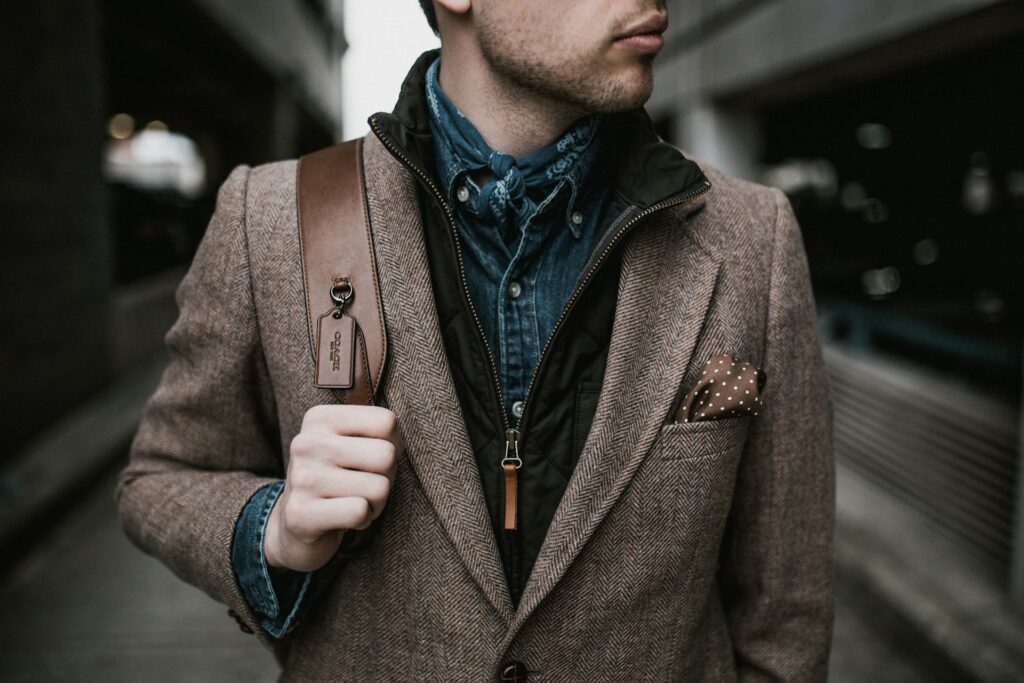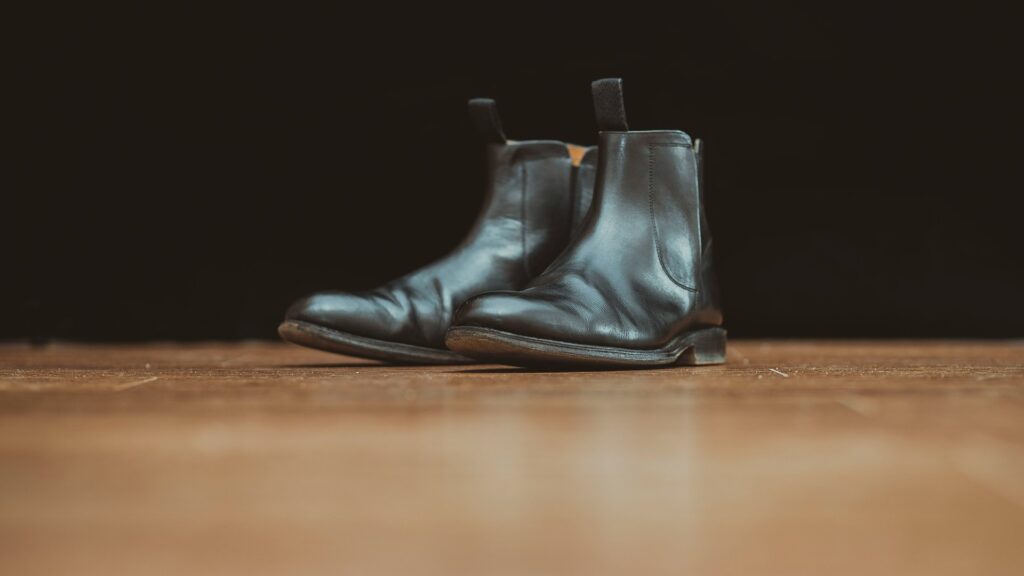The Mod movement, born in the coffee houses and jazz clubs of late 1950s London, wasn’t merely a fashion statement—it was a cultural revolution. Young working-class Britons, inspired by Italian tailoring, French New Wave cinema, and American jazz, crafted a distinctive style that would define an era. Today, the Mod aesthetic continues to influence fashion with its sharp silhouettes and meticulous attention to detail.
The Foundation: Suits & Tailoring
At the heart of Mod style lies the suit—but not just any suit. A proper Mod suit tells a story of precision and sophistication through its details. The jacket should be slim-fitting, featuring narrow lapels and three buttons, with sleeves cut slightly shorter to reveal the perfect amount of shirt cuff.
The trousers complete the narrative: trim but never skinny, with a clean, straight leg that breaks perfectly at the shoe. Amongst the cognoscenti, mohair suits in charcoal grey or navy were particularly coveted for their subtle sheen and durability, marking the wearer as someone who understood the finer points of style.
Read: 6 chic and stylish alternatives to the traditional men’s suit

Shirts: The Mark Of Distinction
The button-down shirt serves as the foundation of any serious Mod’s wardrobe. The most discerning enthusiasts favour Ben Sherman’s iconic gingham checks and Oxford cloth button-downs, with collars measuring precisely three inches—a detail that speaks volumes to those in the know. The fit must be immaculate: slim through the body with a box pleat at the back allowing for movement, particularly important when dancing to the latest American R&B imports at all-night clubs.
The Fred Perry tennis shirt holds an equally hallowed position in the Mod wardrobe. Its laurel wreath logo has become synonymous with the movement, but it’s the fit that matters most—trim but never restrictive, with the sleeve band sitting perfectly at mid-bicep. In crisp white or pale colours, it bridges the gap between casual and smart with effortless grace.
Outerwear: Protection With Style
No piece of Mod outerwear carries more cultural significance than the military fishtail parka. Originally adopted as practical protection for expensive suits during scooter rides, it evolved into a defining symbol of the movement. The M-51 style, with its fur-trimmed hood and olive green fabric, remains the platonic ideal. It should fall below the knee, creating a dramatic silhouette that’s both practical and striking.
For milder weather, the G9 Harrington jacket offers a lighter alternative that’s no less significant. Its tartan lining and two-tone ribbed trim represent a perfect marriage of British and American influences. Whether in natural tan or navy, it’s a piece that works as well with tailoring as it does with more casual attire.
Footwear: The Foundation
A Mod’s shoes tell you everything about their commitment to the culture. The Cuban-heeled Chelsea boot reigns supreme, its pointed (but never exaggerated) toe and mirror-shine finish demonstrating an understanding that style requires effort. The heel should hit that sweet spot of around 1.5 inches—enough to make a statement without sacrificing sophistication.
For those occasions requiring something different, the penny or tassel loafer steps in admirably. Bass Weejuns were the original choice, and their classic design remains unimpeachable. The shine should be immaculate, reflecting both street lights and a dedication to perfection.

The Art Of Layering
Mastering the art of layering separates the true Mod from the mere enthusiast. Begin with a crisp button-down or polo, perhaps adding a fitted V-neck jumper in fine merino wool. A tailored jacket comes next, and finally, weather-appropriate outerwear. Each layer should complement the others, creating a harmonious whole that looks effortless despite the careful thought behind it.
The Off-Duty Evolution
While the suited-and-booted aesthetic defines classic Mod style, the movement’s later years saw the emergence of more casual elements. The men’s vintage t-shirt became a surprising addition to the Mod wardrobe, particularly those featuring bold geometric prints or simple striped designs. Original 1960s examples are highly sought after today, with their distinctive slim cut and slightly shorter sleeves perfectly complementing high-waisted trousers.
This casual turn wasn’t a departure from Mod principles but rather an expansion of them. Even when wearing something as simple as a t-shirt, the same rules of fit and proportion applied. The collar should sit perfectly flat, the sleeves should hit at mid-bicep, and the length should allow for a subtle tuck into trousers. When paired with slim-cut chinos and Chelsea boots, these vintage pieces bridge the gap between smart and casual while maintaining that essential Mod sharpness.

Essential Mod Style Rules
True Mods live by a precise code of dress. While some fashion rules are made to be broken, these principles are considered sacred:
- Every garment must be immaculately pressed and stored properly – no excuses for wrinkles
- Shoes should be polished daily with proper attention to the welts and edges
- Trousers must break exactly at the shoe – any longer looks sloppy, any shorter appears affected
- Shirt cuffs should extend precisely half an inch beyond jacket sleeves
- Ties should never exceed two inches at their widest point
- Suits must be dry cleaned regularly but not excessively – roughly every four to six wears
- All elements of an outfit should work in harmony – no single piece should dominate
- Colours must complement rather than match exactly – coordination shows sophistication
The Bottom Line
Today’s Mod style allows for thoughtful evolution while respecting its roots. Contemporary tailoring might be slightly slimmer, and technical fabrics might offer modern performance, but the core principles remain unchanged. The key is understanding which elements are sacred and which can be subtly updated for modern life.
Remember: True Mod style isn’t about slavishly copying the past, but rather understanding and respecting its principles while making them work for contemporary life. It’s an approach to dressing that prizes quality, attention to detail, and the confidence that comes from knowing every element of your outfit has been carefully considered. In a world of fast fashion and casual dress, the Mod aesthetic remains a powerful reminder that style is about more than just clothes—it’s about culture, identity, and the pursuit of perfection.





